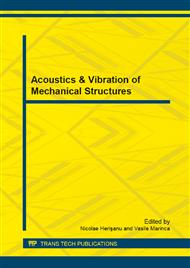p.208
p.213
p.217
p.222
p.230
p.237
p.244
p.251
p.257
Dynamic Analysis of a Lower Limb Prosthesis
Abstract:
The dynamic analysis of the lower limb prosthesis is necessary mainly for defining the joint mechanical specifications. This paper presents two models of lower limb prosthesis. Both models have two active joints (ankle and knee) and the same overall dimensions. The main difference between the two models consists in the joints mechanical parameters. The prosthesis elements are modeled according to the human anatomy, taking into account the weight of the amputated limb. Based on this preliminary data the two models were developed using the Solid Edge V20 software. The dynamic analysis was developed in Dynamic Designer Motion Professional module which is a subset of Motion Professional software. The gait cycle time was set to 2 seconds. There were studied two main stages during the gait cycle: extension (from hyper-flexion to hyper-extension), and flexion (vice versa), respectively. The input data are: geometrical model, material properties of the prosthesis elements, gravity force, joint laws of motions and ground reaction forces. Based on this input data the software calculates the path, velocity and acceleration of the prosthesis elements and reaction forces and torques in each joint.
Info:
Periodical:
Pages:
230-234
Citation:
Online since:
September 2013
Authors:
Price:
Сopyright:
© 2013 Trans Tech Publications Ltd. All Rights Reserved
Share:
Citation:


